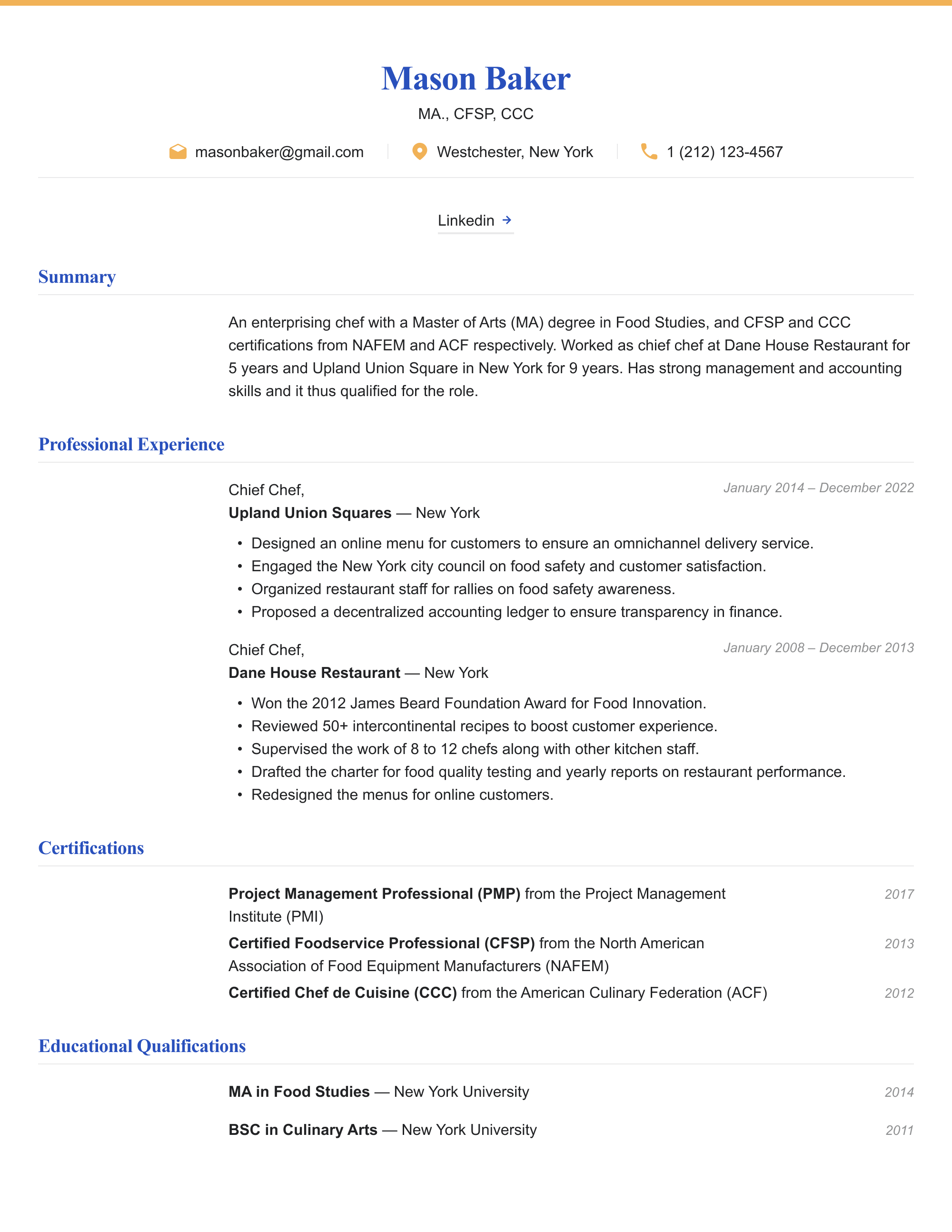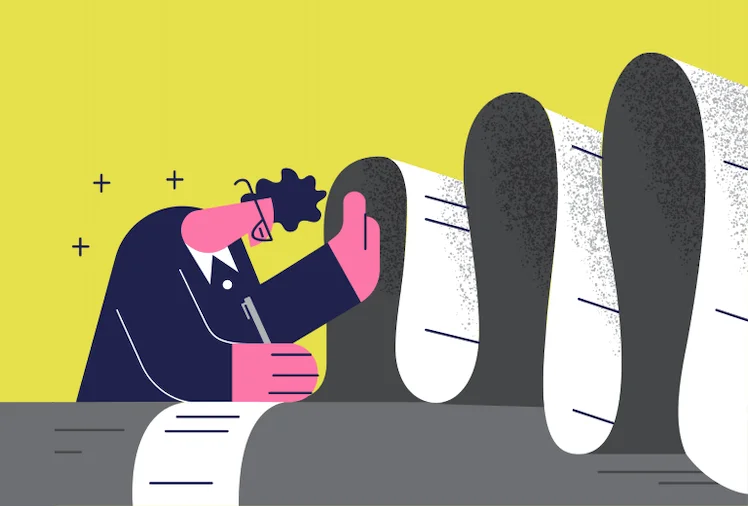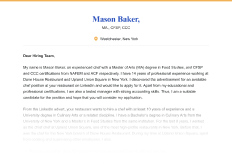Introduction
There are many chef resume examples and templates on the internet. If you are the average chef
looking to develop
an effective and convincing resume, you will be confronted with dozens of templates. Some of the
ones you find
on professional resume websites and resume-building blogs are good, whereas some are so terrible
that you can
only use them as examples of how not to write a modern resume.
Knowing how to build a good resume is an important skill for chefs and other professionals. Since
this is the
case, we got in touch with a handful of professionals who are well-known for their practiced
proficiency in HR
and recruitment. Subsequently, we developed this article based on the tips we obtained from the
recruitment
experts.
Thus, this article will present several tips on the best way to create a unique and convincing Chef
resume. If
you can adhere to the tips specified in this article, you would be half-way to getting a well-paying
and
satisfying job as a chef.
Salary Prospects and Job Requirements
A convincing resume for chefs consists of relevant information packed in a simple and yet compelling
format.
However, the secret to the effectiveness of any such resume is in how relevant the information
contained in it
is. For example, if you manage to create the best resume in the world only for it to be based on the
job
requirements of a HGV (heavy goods vehicle) driver, can you expect to get the job of a chef with it?
Absolutely
not. So, the first thing you must note about an effective resume for chefs is that it has to be
based on
relevant and relatable information.
Salary Prospects for Chefs
One of the best guidelines for designing a powerful resume for chefs is to organize every information
you include
in line with your salary prospects and the requirements of the job. Let us briefly analyze this
salary factor
and see how it can influence how you write your chef resume.
Chefs in urban Honolulu, Hawaii, earn an average of above $70k annually, the highest figure in
the US.
Source: Zippia
According to US News and
World
Report, the average annual salary for chefs and restaurant cooks as of 2021 is around
$30,010. However,
there is a higher limit difference of about $5,000 and a lower limit difference of about $4,000. In
other words,
depending on your skills alone, you can make up to $36,480 as a chef every year. Also, if you live
in cities
such as Kahului (Hawaii) or San Francisco (California), you can earn as high as $45,000 or $40,000
annually.
Job Description and Requirements
Considering these sizable salary bounds, the typical requirements for the job of a chef are very
detailed. These requirements can be classified on the basis of culinary requirements, management
requirements, and more, depending on the employer. Nevertheless, we have compiled some of the most
recurrent modern requirements for chefs. You can find them listed below:
-
Cooking requirements: Cooking skills are the most fundamental requirements of a modern chef.
This means that every employer that might be interested in you as a chef or restaurant cook
wants you to be versed in many types of foods. However, even more important than this
versatility is that you don’t spend long hours cooking. Thus, the skill of cooking high-quality
food within a reasonable amount of time is highly favored.
Your employer needs to know that you can make the types of food they care about. Your resume
should reflect this. Tailor the cooking skills you highlight to the requirements of the job.
-
Organizational requirements: In addition to cooking skills, chefs are required to
have strong organizational skills. You must be able to sort and order the different things
that fall under your control. These include food ingredients, orders, and much more.
Even though you will likely have assistance once employed, employers are interested in knowing
that you can organize these things yourself.
- Management requirements:
Management skills are also in high demand among employers of chefs and restaurant cooks.
The typical restaurant cook, for example, has a number of assistants under them. Thus, they must
play the role of a supervisor from day one of their employment. So, you need to have management
skills to pique the interest of an employer or recruiter.
Hiring managers look for outcomes, not just skills. Mention in your resume how you helped boost
sales, made the meals more delicious, or increased customer satisfaction in a previous role.
-
Accounting requirements: You also need to have accounting skills if you want hiring
managers to recommend you. Accountability is well-sought-out these days, so there’s nothing
special about this requirement in a chef resume.
- Educational requirements: Chef employers tend to fix education specifications on
their jobs. This means that you generally need at least a diploma in a culinary course or a
way of showing that you are proficient in the art of cooking.
Ultimately, due to how important the information on salary prospects and job requirements is to
developing a powerful resume, you cannot rely entirely on any tip. The best way to stay ahead is
to look up some of the chef jobs posted on sites like Indeed and LinkedIn. From these sites,
you will find up-to-date requirements for chefs and build your resume accordingly.
Chef Resume Example
Generally, there are 5 of these sections that make up your resume, namely, the name and contact
information section, the summary section, the professional experience section, the certification
section, and the education section. Any additional section is simply for adding extra information
for recruiters.
The Name and Contact Information section comes first. Like the name of the section, all that you need
to include in this section is your name and contact information. However, there is a format to
designing this section even though it holds the fewest words among the sections of the modern resume.
To make it easier for you, here is some of the crucial information that recruiters look out for in
the Name and Contact Information section:
-
Your name in full: The first thing a hiring manager wants to see on your
chef resume is your full name at the top of your resume.
-
Abbreviations for educational qualifications and certifications: In front
of yourname, you can include abbreviations of your educational degree(s) and certification(s).
There’s no set restriction on how many of these you can include but 3 is fine: 1 for the most recent
and relevant abbreviation of your educational accomplishment, and the others for certifications on your
culinary, management, or accounting skills.
-
Residential address: Underneath your name and certifications, you must include your contact
information. You don’t need to include your entire address, just your city as state.
-
Phone and email address: Underneath your residential address, you should also include
your phone number so recruiters can engage you later if they want to. In addition, you
should also add your email address under your phone number for the same purpose.
If you have any website where your chef skills or achievements are displayed, you can include the
link under your email address. If not, you can simply add the links to your Facebook or
LinkedIn profile.
Resume Summary Section
The goal of this section is to introduce yourself to the recruiter by summarizing everything on the
resume. This
is very helpful in that some recruiters may not have the time to read through all of your resume. If
you manage
to capture their attention with this summary, you will compel them to either read the rest of your
resume or
recommend you for further testing.
Don't use the same resume summary for every prospective employer. Modify the section according to
the requirements of each job advert.
Even though this section is supposed to be a summary, it has a format. Subsequently highlighted are
some of the must-haves of this format in a modern resume:
-
Your certifications: Your certifications as a chef must be the first
thing that the
hiring manager sees here. This may include your professional certifications or education, as
long as it
shows you to be someone who learned needed culinary and management skills.
-
Your experience: Your experience is the next thing to throw into the
Summary section.
You can mention the most recent place where you were employed as a chef and highlight one
very important
achievement from that place.
-
Your qualification for the job: Lastly, make sure to tie up the section
with an
emphasis on your qualification for the job. To do this, simply pick out the most applicable
requirement
for the chef position and tie it to your highlighted capabilities.
Summary
An enterprising chef with a Master of Arts (MA) degree in Food Studies, and CFSP and
CCC certifications from NAFEM and ACF respectively. Worked as chief chef at Dane House
Restaurant for 5 years and Upland Union Square in New York for 9 years. Has strong management
and accounting skills and it thus qualified for the role.
Professional Experience Section
The Professional Experience section of your chef resume may come in third place but it is one of the
most important. It is the focus of the majority of recruiters, especially those that use ATS (Applicant Tracking
Systems) to scour through resumes. Even so, you can make your chef resume stand out no matter how
stringents the job requirements for professional experience are.
Here are some tips you can use to draft a strong Professional Experience section:
-
Write around the job description: The secret to an effective Professional Experience
section is writing around the requirements posted in the job advert. Make sure that every
case in point you use for your career experience relates to these requirements. For example,
if one of the job requirements is “Someone with strong accounting skills,” try to use the
same terms (strong accounting skills) in the section. As such, even if the recruiter is using
ATS, your resume won’t be thrown out.
-
Focus on your milestones: Every employer wants a doer. So, use bullet points to draw emphasis
to your past achievements. Make this the focus of the entire section.
Professional Experience
Chief Chef, Upland Union Squares — New York January 2014 – December
2022
- Designed an online menu for customers to ensure an omnichannel delivery service.
- Engaged the New York city council on food safety and customer satisfaction.
- Organized restaurant staff for rallies on food safety awareness.
- Proposed a decentralized accounting ledger to ensure transparency in finance.
Chief Chef, Dane House Restaurant — New York January 2008 –
December 2013
- Won the 2012 James Beard Foundation Award for Food Innovation.
- Reviewed 50+ intercontinental recipes to boost customer experience.
- Supervised the work of 8 to 12 chefs along with other kitchen staff.
- Drafted the charter for food quality testing and yearly reports on restaurant performance.
- Redesigned the menus for online customers.
In case you have never held a professional chef position before setting out to write this resume,
you can use simple positions that you held over time as long as they are related to some of the
requirements of the job.
Licenses/Certifications Section
The Certifications section is where you back up your skills with the relevant professional
qualifications. Here, you list the career certifications that show you have the requisite training
for a chef. The more culinary certifications you can list, the better. Of course, you cannot
fabricate certifications here. Make sure to only include what you have and can prove, and only if
they're relevant or required for the chef position.
Some of the most common professional certifications for chefs include Certified Foodservice
Professional (CFSP) from the North American Association of Food Equipment Manufacturers (NAFEM)
and Certified Chef de Cuisine (CCC) from the American Culinary Federation (ACF).
Certifications
-
Project Management Professional (PMP)
from the Project Management Institute (PMI) - 2017
- Certified Foodservice Professional (CFSP)
from the North American Association of Food Equipment Manufacturers (NAFEM) - 2013
- Certified Chef de Cuisine (CCC)
from the American Culinary Federation (ACF) - 2012
Education Section
The Education section is similar to the Certifications section in modern resumes. Both relate to
certifiable attainments. The Education section is where you list your most recent and relevant
academic and professional degrees. It is one of the easiest sections to construct because you
already have the information you need for the section.
Although there is no established format of how to write your educational qualifications in a chef
resume, you can simply write the title of the degree, the institution you obtained it from, and
the year. Also, you don’t have to include anything lower than tertiary educational qualifications
unless specified in the job advert. Furthermore, make sure the dates of graduation are in reverse
chronological order.
Educational Qualifications
- MA in Food Studies New York University — 2014
- BSC in Culinary Arts New York University — 2011
As stated earlier, it is fine to include one extra section where you provide any additional
information that does not fit within any of the other sections. A good example is a section on
languages since you will likely interact with people from different cultures. However, this depends
on the job requirements for the advertised chef position.
Also, take note of some of the following tips on formatting:
- Write in clear English and be straight to the point.
- Use keywords.
- Use standard font styles like Times New Roman and Calibri.
- Format the text to make it look orderly.
- Use the standard US Letter format (215,9mm x 279,4mm) and limit your resume to a single page.
To get extra tips, check out these articles:
Conclusion
The perfect chef resume is the first start to the perfect chef position. If you can develop a resume
for chefs
based on the tips highlighted in this article, you are half a step from getting your dream chef
job.
Chef cover letter
An ideal resume is a combination of content that would allow you to stand out and format that is
ATS-friendly, neat and comfortable to read. Learn more about writing the perfect resume here, and be sure to
check out expert tips on creating an effective Chef cover letter to go with your resume.
Go to cover letter
HR content specialist
Sam M. Dike
Sam is a HR content specialist. He enjoys sharing career advice and helping professionals land the right jobs. You`ll always find him conquering quests in video games when he`s not writing about human resources.





